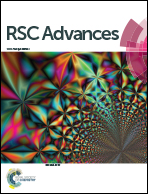Effects of osmolytes on protein–solvent interactions in crowded environments: study of sucrose and trehalose effects on different proteins by solvent interaction analysis
Abstract
Partitioning of 11 different proteins and 30 small organic compounds was examined in aqueous dextran–PEG–sodium/potassium phosphate buffer (0.01 M K/NaPB, pH 7.4) two-phase systems (ATPSs) containing 0.5 M sucrose or 0.5 M trehalose. The data obtained were compared to those reported previously for the same compounds and proteins in osmolyte-free ATPS and ATPS containing 0.5 M TMAO (Breydo et al. (2015) Archives of Biochemistry and Biophysics. in press), and analyzed in terms of the so-called Collander linear solvent regression relationship. It was found that the logarithms of the partition coefficients of proteins in the presence of 0.5 M sucrose and trehalose are linearly interrelated. The structural distances of protein 3D structures relative to that of ribonuclease B were estimated. These estimates were shown to be linearly related to the previously reported values determined for the same proteins based on their responses to different ionic environments.


 Please wait while we load your content...
Please wait while we load your content...